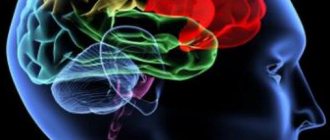What is a worldview? This is something without which humanity would not have reached such heights in modern times - the knowledge of our ancestors, whose experience was passed on from generation to generation, simply would not have reached our days. The structure of the worldview in itself is quite complex; it combines a set of information about the world surrounding a person, as well as its perception; the attitude of the individual to his “I”; life principles and principles; morality, ethics and spiritual world of each individual person.
Factors influencing the formation of worldview
Already in childhood, when a person consciously separates himself from the rest of the world, knows how to speak and think, his own worldview begins to form. Various factors influence what it will be like in adulthood:
- A person’s environment from the first days of his life. The child adopts family traditions and the way relatives communicate with each other, considering them the norm. These are the first steps in the formation of a worldview. Communication in kindergarten, school with peers, and then student, adult life gives new experiences and goals.
- The area where a person was born. The country in which a new member of society was born, its history, the customs of the people inhabiting this territory - the structure of the worldview unites all this into a single whole, into the future achievements of a person.
- Religion. There are quite a lot of world religions, and they significantly influence a person’s perception of what is happening around him. Each faith enriches a person’s spiritual life and protects against wrong and dangerous actions. The canons of some recognized religious organizations are aimed at uniting people and supporting loved ones and those in need.
“Feeding” the worldview with fresh emotions and history contributes to the rapid formation of a person’s individuality. Depending on the factors affecting a person’s daily life and the emotions experienced by society and himself, the vision of the world can be either optimistic or pessimistic.
Methods
If we consider the formation of a worldview as a process associated with learning , we can distinguish the following methods (methods):
- verbal methods (this includes conversations, dialogues, discussions, disputes, explanations, stories, lectures and other forms of interaction between people, during which the listener develops a worldview),
- visual methods (a person becomes an observer in relation to static or dynamic images, films, drawings and entire processes, scientific experiments, experiments, performances, etc.),
- practical methods (mental or practical exercises, independent study of processes and situations, etc.).
Worldview is also formed under the influence of authoritative people (teachers, parents, older brothers and sisters, etc.) who use methods of conversation, persuasion, teaching, instructions, etc.
They also use stimulating techniques through reward and punishment .
Taken together, all these methods of forming a worldview allow the “educator” to consolidate given norms of behavior in a person’s mind.
Ways of formation
There are only 2 options for developing a worldview:
- Active (conscious). A person uses additional opportunities to obtain information in order to create his own, individual outlook on life. Various historical documents, psychological trainings, and philosophical publications help him in this. The individual exerts all his inner strength, studying the features of the worldview and developing new goals, foundations and ideals for himself.
- Passive (spontaneous). Most of modern society uses this way of forming a worldview, receiving information from easily accessible sources, adapting to the conditions around them. As a result, a person who has chosen the passive option of growing his perception of the world, in an effort to become like everyone else, loses his individuality.
Sources
Worldview is formed on the basis of internal and external processes that allow a person to create his own belief system. Information comes from different sources to be analyzed and absorbed.
- Educational source. A person learns about the world around him through his own experiments and experiences (ordinary knowledge), as well as through scientific training (at school, institute, courses, etc.). Ordinary cognition bears fruit in the form of unsystematized information that allows you to navigate the world. For example, when a person stays in the sun for a long time and gets a blow, he may put the sun at the forefront of the problem and conclude that it is unsafe to be on the beach without an umbrella. This is exactly how ordinary cognition works. But scientific knowledge can already explain the causes of heat stroke, its types and consequences.
- Normative/value source. The normative source is formed on the basis of values, as well as a “code of behavior in society,” which secretly regulates people’s relationships.
Meaningful beliefs allow a person to believe in the truth and rightness of his actions. - Practical source. Knowledge that is not used in practice is not always fertile material for the formation of a worldview.
But if a person uses them to check random information or stable axioms, an internal “evaluator” is activated, which can draw new conclusions based on knowledge applied in practice. - Emotional source. A person is to some extent dependent on his emotions, therefore some ideals, values and beliefs are formed at the level of feelings and intuition.
What is the subject of study of developmental psychology? Find out about this from our article.
Structure
The structure of a worldview consists of several interrelated aspects:
- Knowledge. This part includes information received from the first moments of understanding the environment. Knowledge plays a vital role in a person’s life - it is thanks to it that an individual can easily navigate space. The greater the volume of information learned, the firmer and more stable the life position. The knowledge that forms a worldview can be scientific, practical and professional.
- Emotionality. How a person reacts to various life situations is also a component of worldview. Negative and positive emotions, as well as morality and a sense of duty subsequently form the individual’s own view of the world around him.
- Values. A person’s attitude to what is happening around him, according to his understanding of his own aspirations, needs, meaning of life and interests. Values in a worldview are of three types: significant (objects, events and people that evoke strong emotions); useful (practical side of life, clothing, food, shelter, knowledge, skills); harmful (negative attitude towards something or someone, actions, situations, for example, murder, violence).
- Actions. The implementation by a person of his own ideas and views in practice. There can be both positive (helping people, charity) and negative (extremism, rejection of people with physical disabilities, military actions, crimes of various kinds).
- Beliefs. The individual's and society's own views on life. They unite people and are vital for fanatics who unprincipledly follow their values. Beliefs can be firm, true, not amenable to any changes, as well as strong-willed, inspiring, forcing one to fight obstacles.
- Character. The structure of a worldview also includes the personal qualities of an individual, without which the formation of stable views on life is not possible. Character traits that contribute to the growth and development of a worldview: will (achieving set goals), faith (self-confidence, trust in other people), doubts (“self-flagellation” regarding new knowledge or values).
Structure of worldview
As you know, the formation of a worldview begins at the age of two or three. By the age of seven, children have already developed a personal worldview based on the experience and practical application that they have managed to obtain and process.
The main questions characterizing human activity at any age are:
- know what he wants;
- have an idea how to achieve this;
- want exactly this;
- achieve what you want.
To understand what a worldview is, you should know what structural elements it consists of:
- cognitive - includes all scientific, social, technical, everyday and other knowledge that is known to man and together creates his universal understanding of the world;
- value-normative – includes the ideals and beliefs that underlie the actions of each individual and constitute his value system;
- moral-volitional – combines the existing system of knowledge with the emotional perception of reality and a person’s determination of his place in society, the team, the world and his attitude towards it;
- practical - the worldview is considered complete and is perceived as a guide to action, by which one can determine what values underlie it.
People may change their beliefs throughout their lives, but their core values remain constant.
Levels
Levels of worldview, according to the intellectual, spiritual development of a person, as well as the presence of logical and philosophical thinking, are divided into everyday perception (level No. 1), professional (No. 2) and philosophical (No. 3).
The everyday worldview, also known as the everyday one, is formed spontaneously, due to the daily life of the individual. People whose worldview is “stuck” at the first level and does not develop further are usually unable to logically explain any phenomenon, as well as restrain emotions in conflict situations - at such moments, feelings prevail over common sense. This level is basic, while other levels of worldview are considered acquired. An everyday vision of the world is formed on the traditions and customs accepted in the society surrounding the individual, as well as on experience and instincts. Thanks to him, a person can freely communicate, analyze, and learn.
A professional understanding of the world is the acquisition of skills and experience in a certain field of activity: politics, science, philosophy, creativity, culture. A person with a professional worldview can share his own ideas and thoughts - information of this kind is passed on from individual to individual, from generation to generation. It is worth noting that many famous political figures, as well as philosophers and cultural figures, had this level.
The philosophical (theoretical) worldview is considered the most developed stage. Having achieved it, a person studies, criticizes, analyzes the attitude, acceptance/non-acceptance of the world around him and his “I” as such. An interesting fact is that only a few can reach this level - the philosophical worldview is accessible only to some outstanding theorists and philosophers.
The essence of worldview
The main condition for the development of the human personality is the constant study of the surrounding reality, the changes occurring in it and adaptation to them.
To understand what the essence of a worldview is, one should consider the levels of which it consists:
- Attitude is the ability of people to adapt to the environment and navigate it. At this level, knowledge of the world is carried out through the 5 senses and the work of the unconscious. This is also where the emotional assessment of reality is located. For example, an unexpected feeling of joy and happiness arises at the unconscious level before the brain begins to look for the reason that led to such a change in mood.
- Understanding the world is work at the level of consciousness, during which information about the surrounding reality is received and processed. During this process, 2 types of perception appear:
- Ordinary, during which a person forms his opinion about the desired standard of life, people around him, work, country, politicians, family relationships and much more.
- The theoretical type is a general knowledge of existence, one’s place in the world, based on the available data of various sciences or philosophy.
The essence of a worldview is to bring all levels of perception of reality into a single system of values, knowledge and their emotional assessment into a certain life position, confirmed by human actions.
Forms
The life activity of previous generations leaves its mark on modern society. Forms of worldview absorbed the experience of ancestors, their history, myths and legends, moral principles and foundations. What our forefathers believed also influenced the worldview of modern individuals. The feelings and views of ancient people on the world around them continue to live, despite significant time intervals. Today there are such forms of worldview: public, group, individual.
Types
There are several types of perception of the world, each of which is inherent in a certain person, with his level of development of views, characteristics, emotions, actions, values, feelings. Types of worldview, without exception, affect every aspect of a person’s life, his spiritual world, feelings and thoughts. All of them help to adapt to a given situation and contribute to the acquisition of new skills and abilities. In some cases, one individual may have several types of worldview at once - it all depends on his desire to improve himself.
Types of worldviews distinguished in the modern world: everyday, mythological, scientific, humanistic. Philosophical and historical are also highlighted. And there is one more type, which we will consider in more detail - this is a religious worldview.
We will help you write any paper on a similar topic.
- Essay
From 250 rub.
- Test
From 250 rub.
- Course work
From 700 rub.
Receive completed work or specialist advice on your educational project
Find out the cost
Philosophy
(gr. “philo” - love and “sophia” - wisdom) - a theorized form of worldview; the doctrine of the general, universal characteristics of the world and the forms of its development by man.
Worldview
– a system of generalized views, i.e. knowledge and ideas, assessments and ideals, norms and principles that determine a person’s attitude to the natural and social reality around him and to himself and thereby determine his behavior and activity in it. In its most general form, this is the spiritual and practical self-determination of a person in the world.
Main characteristics of worldview:
- social nature (can be formed and function only in society);
— historical nature (changes due to changes in historical circumstances);
— systematicity (interconnection and ordering of elements).
The structure of a worldview is very complex and includes a number of blocks (in accordance with the direction of the worldview attitude towards a particular area of reality) and levels (in accordance with the predominant form of the worldview attitude).
Basic ideological blocks:
— naturalological (forms and expresses the attitude towards nature);
— sociological (forms and expresses the attitude towards society and its history);
— humanitarian (forms and expresses a person’s attitude towards himself - self-knowledge and self-esteem);
— philosophical (integrates the previously mentioned blocks into integrity, making the worldview systemic).
Basic ideological levels:
- emotional-rational (worldview) is formed on the basis, first of all, of individual life experience and the so-called “conventional opinions”, expressed in the form of ordinary knowledge and emotional-imaginative ideas and assessments;
— conceptual-theoretical (worldview) is formed by mastering socio-historical experience and scientific knowledge in the process of primarily education and self-education, expressed in the form of theoretically constructed worldview concepts and ideals;
- spiritual-practical (conviction) is formed on the basis of the previous ones by identifying in them ideas and knowledge that have high personal significance in terms of a person’s self-determination and the development of life strategies and tactics for their implementation, expressed in the form of principles and norms that determine his goals, behavior and activity.
The main factors in shaping the worldview:
— external factors: a)
historical era;
b)
a certain socio-economic system of society;
c)
cultural features (religious or atheistic, national-ethnic specifics, etc.);
d)
the social-class structure of society and the place occupied by a person in it;
e)
a person’s social microenvironment (family and immediate environment - friends, educational and work groups, everyday environment, etc.);
— internal factors: a)
self-education;
b)
self-education;
c)
self-realization in practical activities.
These factors determine the formation of certain social and historical types of worldviews, which can be defined as the manifestation and expression of common (typical) worldview characteristics in the individual worldviews of people. To social types
worldviews include social-class, sociocultural, professional, etc.
Historical types of worldview
include systems of typical characteristics of a worldview inherent in the broad masses of people, regardless of their social affiliation. These are primarily mythological, religious and philosophical types.
Mythological
(Greek “myth” - legend, tradition)
is
the most ancient type of people’s ideological orientation.
It was widespread in the conditions of primitive society with the almost complete absence of even elements of scientific knowledge, the absolute dominance of traditions in the life of the tribal community and, in connection with this, the complete dependence of man on nature and other members of the tribal collective. The main function of myth is the preservation and maintenance of the tribal traditional way of life, ensuring survival in these harsh conditions. In myth, fantastic and realistic perceptions of reality are still inseparable (syncretized). Its characteristic features are: a)
humanization of nature;
b)
the presence of many gods (polytheism), living, as it were, among people, interacting with them and “responsible” for certain natural elements, and then spheres of human activity;
c)
practical focus on solving specific life problems;
d)
figurative clarity of mythological subjects;
e)
almost complete absence of abstract logical thinking.
The decomposition of the mythological worldview in connection with the development of industrial activity, the emergence and growth of elements of scientific knowledge and social-class stratification in society led to the gradual separation of religious and philosophical types of worldview from it.
Religious type of worldview
arises and develops on the basis of the isolation of emotionally charged primitive beliefs contained in the myth.
It is based on the rationally (logically) inexplicable belief of people in the presence of supernatural forces, most often in a single and omnipotent creator (God), who determines the fate of the world and man in it. Characteristic features of the religious worldview are also: a)
the bifurcation of the world into this world, in which a person exists during life, and the other world, in which his soul resides before the birth of the body and after his death;
b)
recognition of God’s judgment, which determines the location of the soul (heaven or hell) on the basis of the sinfulness or sinlessness of a person’s earthly life;
c)
recognition of a certain ritual that ensures indirect contact with God (cult).
The main world religions are Buddhism, Christianity and Islam, the most common national religions are Shinto, Hinduism and Judaism. The most important functions of religion as a worldview are: a)
compensatory and consolatory (maintaining people’s hope for God’s protection and help in misfortune, as well as for the embodiment of desires and ideals that are unrealizable during life);
b)
unifying (consolidation of people around certain ideas);
c)
moral and educational (cultivation of moral ideals and principles of behavior in society);
d)
cultural (formation and dissemination of a certain culture).
The philosophical type of worldview is characterized by the fact that it is: a) rational (based on knowledge and based on logical thinking); b) reflexively (there is a turning of thought inward); c) systemic (has internal unity of its structure); d) relies on a clear conceptual apparatus. The emergence of a philosophical type of worldview historically coincides with the formation of philosophical and theoretical thought, and therefore their functions in society, which will be discussed in the next section, also largely coincide.
Attention!
If you need help writing a paper, we recommend turning to professionals. More than 70,000 authors are ready to help you right now. Free adjustments and improvements. Find out the cost of your work.
Cost calculationGuaranteesReviews
Religion is an integral part of worldview
There has long been an invisible struggle between religion and science. Scientific research allows humanity to develop and overcome diseases, while religious knowledge enriches the inner world and helps to survive negative moments in life. The religious worldview is one of the strongest and most effective types of perception of the world. This is explained by the fact that belief in a supernatural, strong being, possessing limitless knowledge, and also controlling moral standards, will, knowledge and physical capabilities of a person, allows you to throw off some of the responsibility for your actions. In addition, faith forces an individual to struggle with difficulties and move forward, gathering groups of like-minded people.
Humanistic vision of the world
The structure of the worldview of humanistic-minded individuals is a generalization of the principles of humanism, namely love of humanity:
- The most valuable thing in the world is a person.
- Each individual is a self-sufficient person.
- All people have limitless powers for self-improvement, development in all areas of life, and also have the right to demonstrate their capabilities and talents.
- Any individual who is part of society is able to independently change his thinking, manner of communication, and character.
- Every person is capable of self-development and a positive impact on the society around him.
Types of worldview
The concept of a worldview and its structure can be presented in different ways, but historically the foundations of a worldview have been formed from three types. The first type is the most basic, the most global, which arises first. This worldview is mythological. It originates in the realm of legends and traditions.
A person who is in the grip of a mythological worldview is an unfree person. Like an archaic man, shackled by the chains of bondage, who was dependent on all natural phenomena and his own fellow tribesmen, because he had no right to his personal opinion. If he disobeyed, he could be subjected to death or ostracism (exile).
Scientific perception
This type relies entirely on precise thoughts, specifics, facts, devoid of subjectivity. A person who has a scientific worldview is rational, calculating and cold. It so happens that science, philosophy and history have an inseparable connection and numerous common aspects. However, the scientific type of vision of the world allows us to find reasonable answers to every inexplicable phenomenon, in contrast to the historical type, which includes myths and legends.
Worldview today
The global community that exists today is integrated across the entire planet. The modern worldview of man includes the sum of knowledge of all available sciences at the level of a non-specialist. It is based on the knowledge of reality through the 5 senses with further processing of information by the mind.
From the data received, a person builds his own picture of the world, which he can consciously influence and modify. The only thing that has remained unchanged is man's purpose. She is still in the knowledge of the world and place in it.
Philosophical views on life
Philosophy and worldview are practically inseparable concepts. The vision of the world, according to this type, is based on a theory supported by scientific and natural justifications, as well as on logically explainable real (both personal and social) phenomena. Neither philosophy nor worldview of any type would have a place in modern times if they were not closely connected with history. Philosophical teachings say that a person who has such a vision is obliged to devote his life to the study of the world and the endless search for truth.
conclusions
The entire history of mankind has been accompanied by two groups of knowledge. Some knowledge was available to everyone, while others were available to a narrow management circle. In order to retain managerial powers, this circle purposefully maintained illiteracy and the inadequacy of society’s worldview. Thus, society was dependent on a group of people.
Plutarch also described the indignation of Alexander the Great regarding the publication by Aristotle, his teacher, of certain philosophical teachings. Alexander, in a letter to Aristotle, pointed out the mistake of promulgating teachings that were intended for selected people.
Aristotle responded with a reassuring letter. He published only part of the teachings, which, without additional explanations, cannot be fully perceived by the people. There are so many texts that are impossible for ordinary people to understand without explanatory keys to them.
Francis Bacon observed nineteen centuries later that knowledge is power. This suggests that there has always been a group of people who had a more perfect worldview.
What is a worldview? Brief Definition
A generalization of a person’s actions, his desires, attitude towards people, the invaluable experience of previous generations, everyday activities, work on oneself - all this includes a worldview. It is not possible to briefly describe the unique worldview of an individual person, since all individuals are individual, which means that everyone has their own, established understanding of the world. Literally, worldview stands for “look at the world,” look at it and experience certain emotions, accept it as it is, or reject it, creating your own inner world.
The role of worldview in the existence of humanity
Taking experience from generations gone by, no one thinks about how exactly it is absorbed and allows human society to move on. The beautiful word “worldview” is an empty phrase for some individuals, but for many this term simultaneously means history, science, the inner world of a person, spirituality, and reliable help in achieving their goals.
What does a worldview give an individual? An established, stable and healthy worldview allows a person to easily adapt to society and self-improvement. Thanks to this, he does not see obstacles in solving problems, achieves promotion, and quickly finds an explanation for what is happening. Worldview gives its owner the ability to correctly set priorities and determine life values. The world's vision is more than just one person's views. Worldview is the thoughts and capabilities of the entire society, the “engine” that pushes evolution forward.










